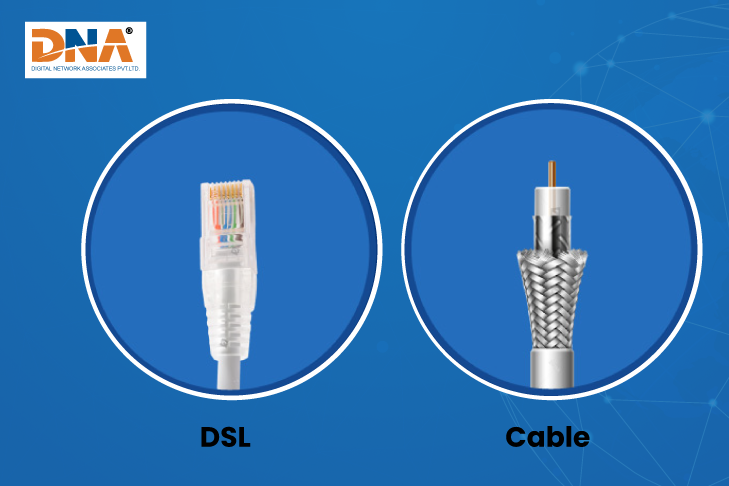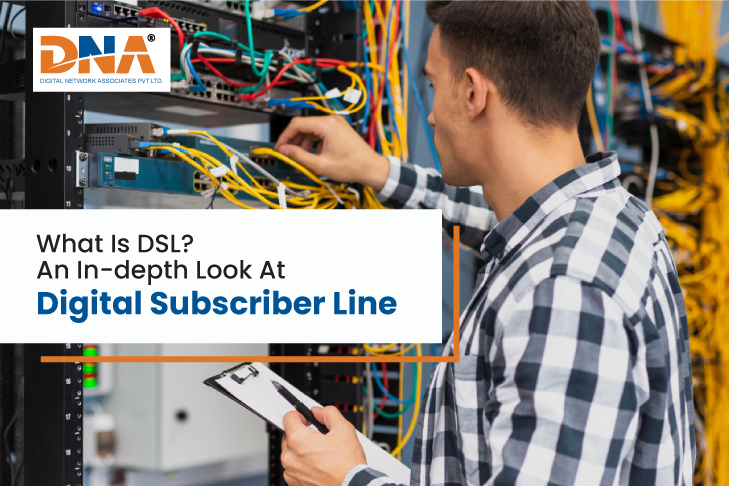What is DSL? An In-Depth Look at Digital Subscriber Line
In today’s digital age, there are many reasons why individuals need the internet to run at a high speed. First and foremost, a high speed internet connection helps to access various online resources without any lag. Fast internet also supports smooth communication when someone is interacting through a video call. Efficient collaboration is also facilitated whenever professionals are working from remote locations. Overall, high internet speed is absolutely essential for better communication and enhancing productivity.
In this article, you will know more about DSL internet, its types, and how it differs from a cable internet connection.
What Is DSL And How Does It Work?
A kind of home broadband in Pune connection that transmits data over phone lines is called a digital subscriber line (DSL). As soon as an internet service provider establishes the connection, it divides the telephone line into two frequency bands. At that point in time, the professional uses a device known as a DSL router. This allows receiving telephone calls and accessing the internet without any interruptions or interference. The DSL router then modulates digital data that can be sent along the telephone line. A bit later, a DSL access multiplexer (DSLAM) demodulates the signals that can be sent to the internet.
Now, as far as DSL performance is concerned, it basically depends on the user’s location. If data transmission occurs over longer distances, then users will experience low internet speeds. Hence, it’s always better to choose an internet service provider that is close to your geographical location.
How Does DSL Internet Compare To Cable?
Even though cable internet and DSL connections are the most popular types of internet services, they differ from one another.
Technology
In a DSL connection, existing telephone lines are used for data transmission. Individuals can access the internet without any disruption to their phone services. However, in the case of a cable internet connection, people can access the internet and view shows on television through the same coaxial cables.
Speed
As compared to DSL, people can expect high internet speeds with a cable internet connection. Usually, the speed ranges from 25 Mbps to more than 1000 Mbps in some regions. But the internet speed will depend on the service plan and the cable internet provider. On the contrary, DSL speeds range from a few Mbps to around 100 Mbps. This speed depends on the distance between the internet service provider and the place where the connection is required.
Availability
Many individuals can avail of the DSL connection in suburban and urban regions where telephone lines are present. However, the DSL speeds may not be as per expectations when the location is far away from the internet provider’s place. Cable internet, on the other hand, is available in suburban and urban regions where cable TV service is provided.
Connection
DSL connections may be affected due to the distance between the user’s location and the provider’s office. People will observe a less stable connection or slower speeds owing to long distances. In contrast, cable internet usually offers consistent speeds and reliability, even when internet usage is high.
Bandwidth
Whenever people opt for a DSL connection, it offers dedicated bandwidth. This means that the internet speed is not shared with others in the surrounding area. However, many users can use the available bandwidth simultaneously with the cable internet connection.
Eventually, even when DSL and cable internet have their own advantages and disadvantages, the choice depends on the budget and the desired speed.

What Are The Different Types Of DSL?
There are numerous DSL technologies that you will come across in today’s world.
Asymmetric DSL (ADSL)
The DSL technology, ADSL, is always common at different locations. As the available bandwidth is divided into separate channels, it offers faster download speeds and less upload speeds. Hence, people prefer subscribing to an ADSL connection, particularly when they need to download files from the internet frequently.
Symmetric DSL (SDSL)
When equal bandwidth is required for uploading and downloading files, then people prefer an SDSL connection. This makes it suitable for instances where people consider uploading and downloading to be equally important. But SDSL is less common than ADSL, and the user may have to set up special equipment from the service provider.
Very-High-Bit-Rate DSL (VDSL)
In comparison with ADSL and SDSL, VDSL offers higher bandwidth, making it ideal for watching videos online and playing games on the internet. But, beyond a certain distance, you will observe a significant drop in the internet speed. The quality of the digital signal will also not be up to the mark when the user’s location is not near the internet provider’s workplace.
VDSL2
VDSL2 is an advanced form of VDSL and a technology that offers high-speed internet connectivity. But, after building on the foundation of ADSL, this technology has enhanced data transmission rates. This was accomplished through many advanced modulation techniques. Therefore, VDSL2 is ideal for streaming videos and transferring large files that require high bandwidth. It is also a cost-effective solution when a fiber optic infrastructure may not be easily available.
G.fast
If you’re thinking about setting up an ultra-fast broadband connection, then you must use the DSL technology, G.fast. While the internet service provider sets up everything, he will not have to upgrade the infrastructure. Through the utilization of advanced signal processing techniques, G.fast will always help to achieve a high data transmission rate. This may be beneficial when the deployment of fiber- optics seems unaffordable and challenging.
How Fast Is The Internet Based On DSL Technology?
The speed of DSL internet can vary based on the technology, the individual’s location, and the service provider. But, with technologies like VDSL2, the speed is relatively higher than ADSL. In case the infrastructure is not developed in remote or rural areas, then the DSL speeds may not be as expected. The distance from the internet service provider’s (ISP’s) location will also determine the internet speed of DSL. Besides, the internet speed can depend on the plan you choose from the ISP. Normally, you can use the internet for different purposes with a DSL speed of up to 100 Mbps.
Conclusion
Finally, DSL internet is suitable, especially for those who often listen to music and watch videos. The plans are worth considering because DSL will promise high speed as technology continues to advance. While new technologies like fiber optics emerge, DSL will always be a reliable option for people who like to access the internet time and again. But if you want to use the internet with blazing speed and you can spend beyond your budget, then consider a cable internet connection.
If you’re still seeking a reliable internet service provider who can manage everything for you, then contact DNA Home broadband in Pune today.

